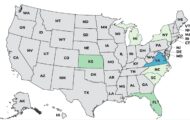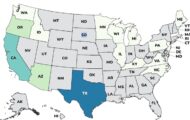A study conducted by Physicians Committee for Responsible Medicine (PCRM) found that almost half of the chickens sold in supermarkets in the United States are contaminated with feces.
 The study looked at chickens produced by Pilgrim’s, Sanderson Farms, Perdue, and 22 other brands. The tests found that “48% of the chicken samples tested positive for fecal contamination, indicated by the presence of coliform bacteria commonly found in chicken dung.”
The study looked at chickens produced by Pilgrim’s, Sanderson Farms, Perdue, and 22 other brands. The tests found that “48% of the chicken samples tested positive for fecal contamination, indicated by the presence of coliform bacteria commonly found in chicken dung.”
Furthermore, “chicken samples from every city and every grocery store chain tested positive. In Dallas, 100% of the chicken bought at the Kroger’s store tested positive for fecal matter. In Washington, D.C., 83% of the chicken bought at a Giant store and 67% of the chicken bought at a Safeway tested positive.”
The study states that on large factory farms, “chickens defecate on themselves and one another and commonly stand in feces. A typical large processing plant may slaughter more than a million birds per week. There, chickens are stunned, killed, bled, and sent through scalding tanks, which help remove feathers but also act as reservoirs that transfer feces from one carcass to another.”
The chickens are then put on a mechanical line for inspection. But those lines run at 140 birds per minute, or more than two a second, “allowing inspectors minimal time to examine each carcass for visible feces,” according to the study.
The National Chicken Council responded to the study, claiming “another misleading attempt by a pseudo-medical group to scare consumers in hopes of advancing their goal of a vegan society and to derail a USDA proposed rule to modernize the poultry inspection system. Chicken processing plants strictly adhere to USDA’s ‘zero tolerance’ policy for visible fecal material as a food safety standard.”
Food Poisoning Bulletin asked Joseph Gonzales, staff dietitian for the Physicians Committee for Responsible Medicine, about that criticism. He said, “We tested 120 chickens and our contracted laboratory (EMSL) followed precise guidelines within FDA testing.”
We asked if the type of E. coli found in the testing can cause human illness. Mr. Gonzales replied, “There are many types of E. coli. The generic E. coli we tested for does not necessarily cause illness, but it is certainly disgusting, as it’s an indicator of fecal contamination. Also, the more generic E. coil found in chicken products likely increase the chances of more pathogens, such as Salmonella and Campylobacter, that are known to cause illness.”
We also asked Dr. Francisco Diez-Gonzalez, professor of Food Safety Microbiology at the University of Minnesota, about this study. He said, “That study is nothing new, there are plenty of previous studies (some of them done by Consumer Reports) that have actually found Salmonella and Campylobacter in about similar proportions of chickens as the non-pathogenic E. coli (that serves as indicator of fecal contamination) of this study. It is generally estimated that about 10% of chicken may have Salmonella and close to 50% may have Campylobacter. Both of these bacteria are two of the most common cases of foodborne disease in the U. S. and they are typically found in feces too.
The industry and the government have recognized this problem and have started implementing different reduction measures, but it seems like it is a relatively complex problem to make significant progress.”
The government is planning on privatizing inspection, allowing corporations to visually inspect the carcasses rather than government inspectors. And line speeds may increase up to 175 carcasses per minute, leaving even less time to inspect the chickens.
If you’d like to comment on the FSIS proposal, the government is accepting comments until April 26, 2012.




